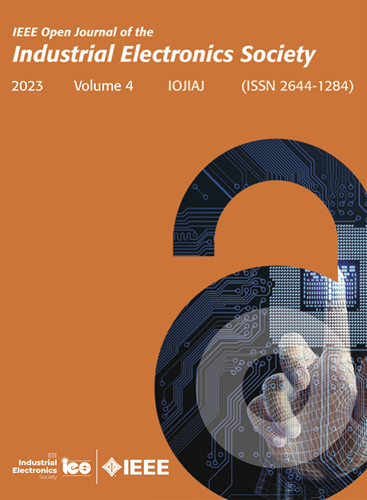一种用于光伏逆变器固有最大功率跟踪的新型直流电容亏缺功率平衡机构
IF 7.2
1区 工程技术
Q1 AUTOMATION & CONTROL SYSTEMS
引用次数: 0
摘要
在并网逆变器中,直流电容器维持直流母线电压,为电网提供稳压电源。然而,在单级逆变器配置中,直流母线电压影响太阳能电池板的功率提取特性。因此,控制直流电容器的电荷决定了太阳能的提取和同时注入电网。在逆变器初始启动时,直流电容被充电到太阳能发电场的开路电压,此时输入功率为零,但表现出电网注入功率的最大自然力。允许电网的电力注入,由于自然力量改变了通过自适应电容器电荷平衡进入太阳能。通过分析直流电容在能量交换过程中所表现出的力的自然现象,提出了一种新的亏缺功率平衡模型来推导逆变器调制。所提出的功率平衡机制在导出逆变器调制时消除了传统的功率跟踪算法、电压和电流调节器。通过提出的模型推导出的逆变器调制自然地将逆变器的运行平衡点改变为最大功率点。因此,不管辐照度如何,系统在太阳能发电场的最大功率点是稳定的。在硬件上验证了该机制的有效性。本文章由计算机程序翻译,如有差异,请以英文原文为准。
A Novel DC Capacitor Deficit Power Balancing Mechanism for Innate Maximum Power Tracking With Eliminated Regulators in PV-Inverters
In grid-connected inverters, dc capacitors maintain the dc bus voltage to feed the grid's regulated power. Nevertheless, the dc bus voltage influences the solar panel power extraction characteristics in a single-stage inverter configuration. Therefore, controlling the dc capacitor charge arbitrates solar energy extraction and simultaneous injection into the grid. At the initial start of the inverter, the dc capacitor is charged to the open circuit voltage of the solar farm, where the incoming power is zero but exhibits the maximum natural force for grid power injection. Allowing the grid power injection due to natural force alters the incoming solar power through an adaptive capacitor charge balance. By analyzing the natural phenomena of the exhibited forces on the dc capacitor during energy exchange, this work proposes a novel deficit power balancing model to derive the inverter modulation. The proposed power balancing mechanism eliminates the conventional power tracking algorithms, voltage, and current regulators while deriving inverter modulation. The derived inverter modulation through the proposed model naturally alters the inverter's operational equilibrium point to the maximum power point. Thus, regardless of irradiance, the system is stable at the solar farm's maximum power point. The efficacy of the proposed mechanism is verified on hardware.
求助全文
通过发布文献求助,成功后即可免费获取论文全文。
去求助
来源期刊

IEEE Transactions on Industrial Electronics
工程技术-工程:电子与电气
CiteScore
16.80
自引率
9.10%
发文量
1396
审稿时长
6.3 months
期刊介绍:
Journal Name: IEEE Transactions on Industrial Electronics
Publication Frequency: Monthly
Scope:
The scope of IEEE Transactions on Industrial Electronics encompasses the following areas:
Applications of electronics, controls, and communications in industrial and manufacturing systems and processes.
Power electronics and drive control techniques.
System control and signal processing.
Fault detection and diagnosis.
Power systems.
Instrumentation, measurement, and testing.
Modeling and simulation.
Motion control.
Robotics.
Sensors and actuators.
Implementation of neural networks, fuzzy logic, and artificial intelligence in industrial systems.
Factory automation.
Communication and computer networks.
 求助内容:
求助内容: 应助结果提醒方式:
应助结果提醒方式:


